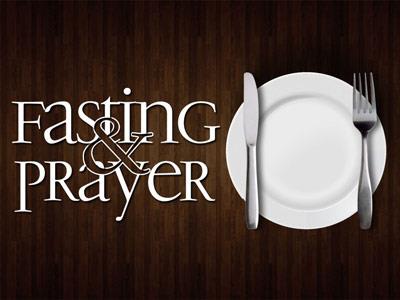-
The Eschatological Day Of The Lord -- Part 1 Series
Contributed by Freddy Fritz on Aug 10, 2018 (message contributor)
Summary: Joel 2:18-27 teaches us that God restores all who return to him in wholehearted repentance.
Scripture
We are currently in a sermon series that I am calling, “Lessons from a Minor Prophet: Joel.”
The Prophet Joel was perhaps the earliest of the Old Testament’s writing prophets (writing in the eighth, or perhaps even in the ninth century BC). The people in Joel’s day had just experienced a massive attack of locusts. This was followed by an extremely severe drought. The resulting devastation crippled the economy and caused incredible suffering, not only for the people, but even for the land and the animals.
God led Joel to use the locust plague as the backdrop for his message to his people. In the first chapter of Joel, he urged the people to pay attention to what God was saying to them through their contemporary circumstances. Joel identified the locust plague as the “day of the Lord.” The “day of the Lord” in Scripture is a day of judgment and blessing. It could refer to either a contemporary day, an impending day, or the future day of the Lord (also known as the eschatological day of the Lord).
Even though no specific sin was mentioned by Joel in his book, it seems that the sin of the people was that they had wandered away from their God in their walk with him. God urged his people through Joel’s message to return to him with all their heart (2:12-13). Apparently, the people of God heeded God’s warning and returned to him in repentance. God wonderfully restored his people because of their repentance.
Let’s read about the eschatological day of the Lord in Joel 2:18-27:
18 Then the Lord became jealous for his land
and had pity on his people.
19 The Lord answered and said to his people,
“Behold, I am sending to you
grain, wine, and oil,
and you will be satisfied;
and I will no more make you
a reproach among the nations.
20 “I will remove the northerner far from you,
and drive him into a parched and desolate land,
his vanguard into the eastern sea,
and his rear guard into the western sea;
the stench and foul smell of him will rise,
for he has done great things.
21 “Fear not, O land;
be glad and rejoice,
for the Lord has done great things!
22 Fear not, you beasts of the field,
for the pastures of the wilderness are green;
the tree bears its fruit;
the fig tree and vine give their full yield.
23 “Be glad, O children of Zion,
and rejoice in the Lord your God,
for he has given the early rain for your vindication;
he has poured down for you abundant rain,
the early and the latter rain, as before.
24 “The threshing floors shall be full of grain;
the vats shall overflow with wine and oil.
25 I will restore to you the years
that the swarming locust has eaten,
the hopper, the destroyer, and the cutter,
my great army, which I sent among you.
26 “You shall eat in plenty and be satisfied,
and praise the name of the Lord your God,
who has dealt wondrously with you.
And my people shall never again be put to shame.
27 You shall know that I am in the midst of Israel,
and that I am the Lord your God and there is none else.
And my people shall never again be put to shame. (Joel 2:18-27)
Introduction
The Sistine Chapel is one of the true jewels of world art. After spending four years painting it, Michelangelo finished his masterpiece in 1512, and the chapel went into daily use. In those days the only light source came from candles. As candles burned year after year, the soot began to rise to the ceiling, obscuring the paintings. After over 400 years of soot, grime, and dust collecting on the ceiling, the original art had to be restored. So a team of restorative artists worked on the Sistine Chapel from 1984-1999 until the monochrome colors were restored to their original beauty.
Prior to the restoration process, many in the art community thought that Michelangelo was a genius at composition. After all, how did he think to have Adam’s hand stretching out, yearning to find the finger of God, which was already reaching out for him? But it was also widely-believed that Michelangelo’s coloration was mediocre. It was too dark, monochromatic, and blah. And yet when they restored those frescoes to their original state, everyone could see the beautiful, fresh, and even spring-like colors—pale pink, apple green, vivid yellow, and sky blue against a background of warm pearly grey. When the maker’s true brilliance and goodness were revealed, people had to change their assumptions about Michelangelo.
In a similar way, for many us, over the years the soot, grime, and dust of daily life have obscured our vision of God’s goodness. God’s character seems blah, mediocre, and maybe even dark. We no longer feel and deeply believe that through Christ we have a good Father. However, by calling us to repentance, God begins a work of restoration so we can see the true colors of his brilliant goodness.

 Sermon Central
Sermon Central



